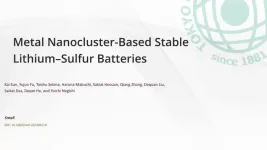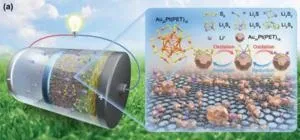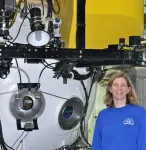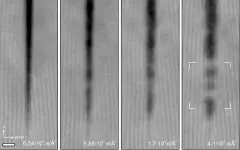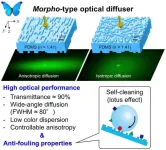The demand for efficient energy storage systems is ever increasing, especially due to the recent emergence of intermittent renewable energy and the adoption of electric vehicles. In this regard, lithium–sulfur batteries (LSBs), which can store three to five times more energy than traditional lithium-ion batteries, have emerged as a promising solution.
LSBs use lithium as the anode and sulfur as the cathode, but this combination poses challenges. One significant issue is the “shuttle effect,” in which intermediate lithium polysulfide (LiPS) species formed during cycling migrate between the anode and cathode, resulting in capacity fading, low life cycle, and poor rate performance. Other problems include the expansion of the sulfur cathode during lithium-ion absorption and the formation of insulating lithium–sulfur species and lithium dendrites during battery operation. While various strategies, such as cathode composites, electrolyte additives, and solid-state electrolytes, have been employed to address these challenges, they involve trade-offs and considerations that limit further development of LSBs.
Recently, atomically precise metal nanoclusters, aggregates of metal atoms ranging from 1–3 nanometers in size, have received considerable attention in materials research, including on LSBs, owing to their high designability as well as unique geometric and electronic structures. However, while many suitable applications for metal nanoclusters have been suggested, there are still no examples of their practical applications. Now, in a latest collaborative study published in the journal Small on 25 August 2023, a team of researchers from Japan and China, led by Professor Yuichi Negishi of Tokyo University of Science (TUS), has harnessed the surface binding property and redox activity of platinum (Pt)-doped gold (Au) nanoclusters, Au24Pt(PET)18 (PET: phenylethanethiolate, SCH2CH2Ph), as a high-efficiency electrocatalyst in LSBs. The work is co-authored by Assistant Professor Saikat Das from TUS and Professor Deyan He and Junior Associate Professor Dequan Liu from Lanzhou University, China.
The researchers prepared composites of Au24Pt(PET)18 and graphene (G) nanosheets with a large specific surface area, high porosity, and conductive network, using them to develop a battery separator that accelerates the electrochemical kinetics in the LSB. “The LSBs assembled using the Au24Pt(PET)18@G-based separator arrested the shuttling LiPSs, inhibited the formation of lithium dendrites, and improved sulfur utilization, demonstrating excellent capacity and cycling stability,” highlights Prof. Negishi. The battery showed a high reversible specific capacity of 1535.4 mA h g−1 for the first cycle at 0.2 A g−1 and an exceptional rate capability of 887 mA h g−1 at 5 A g−1. Additionally, the capacity retained after 1000 cycles at 5 A g−1 was 558.5 mA h g−1.
These results highlight the advantages of using metal nanoclusters in LSBs. They include improved energy density, longer cycle life, enhanced safety features, and a reduced environmental impact of LSBs, making them more environment-friendly and competitive with other energy storage technologies.
“LSBs with metal nanoclusters may find applications in electric vehicles, portable electronics, renewable energy storage, and other industries requiring advanced energy storage solutions. In addition, this study is expected to pave the way for all-solid-state LSBs with more novel functionalities,” highlights Prof. Negishi. In the near future, the proposed technology can lead to cost-efficient and longer-lasting energy storage devices. This would help reduce carbon emissions and support renewable energy adoption, promoting sustainability.
Let us hope that this work motivates the application of metal nanoclusters to other sustainable energy storage systems as well!
***
Reference
DOI: https://doi.org/10.1002/smll.202304210
About The Tokyo University of Science
Tokyo University of Science (TUS) is a well-known and respected university, and the largest science-specialized private research university in Japan, with four campuses in central Tokyo and its suburbs and in Hokkaido. Established in 1881, the university has continually contributed to Japan's development in science through inculcating the love for science in researchers, technicians, and educators.
With a mission of “Creating science and technology for the harmonious development of nature, human beings, and society,” TUS has undertaken a wide range of research from basic to applied science. TUS has embraced a multidisciplinary approach to research and undertaken intensive study in some of today's most vital fields. TUS is a meritocracy where the best in science is recognized and nurtured. It is the only private university in Japan that has produced a Nobel Prize winner and the only private university in Asia to produce Nobel Prize winners within the natural sciences field.
Website: https://www.tus.ac.jp/en/mediarelations/
About Professor Yuichi Negishi from Tokyo University of Science
Yuichi Negishi is a Professor at the Department of Applied Chemistry at Tokyo University of Science, Japan with over 200 publications to his credit. His research expertise includes physical chemistry, cluster chemistry, and nanomaterial chemistry. His notable achievements include The Chemical Society of Japan Award for Young Chemists (Japan Chemical Society, 2008), the Japan Society for Molecular Science Award for Young Scientists (Japan Society for Molecular Science, 2012), Yagami Prize (Keio University, 2017), Distinguished Award 2018 for Novel Materials and Their Synthesis (IUPAC etc., 2018), International Investigator Awards of the Japan Society for Molecular Science (Japan Society for Molecular Science, 2020), The Chemical Society of Japan Award for Creative Work (Japan Chemical Society, 2021), and Mukai Prize (Tokyo Ohka Foundation for The Promotion of Science and Technology, 2023).
Laboratory website
Official TUS website
Funding information
This study was supported by the National Natural Science Foundation of China (Grant Nos. 11674138, 11504147) and the Science and Technology Program of Gansu Province, China (No. 22YF7GA009), the Japan Society for the Promotion of Science (JSPS) KAKENHI (Grant Nos. 22K19012 and 23H00289), Scientific Research on Innovative Areas “Aquatic Functional Materials” (Grant No. 22H04562), the Yazaki Memorial Foundation for Science and Technology, and the Ogasawara Foundation for the Promotion of Science and Engineering.
END
